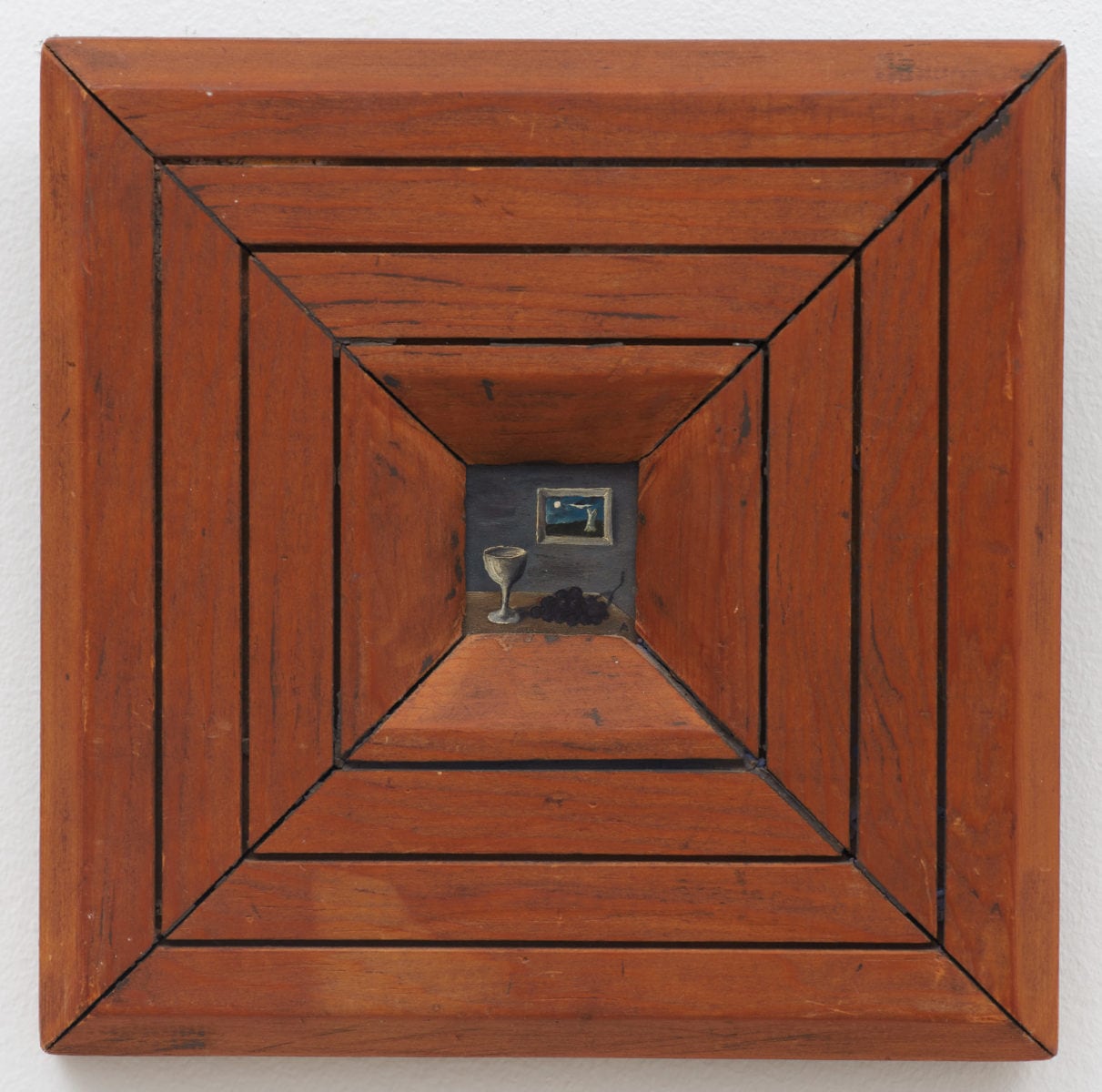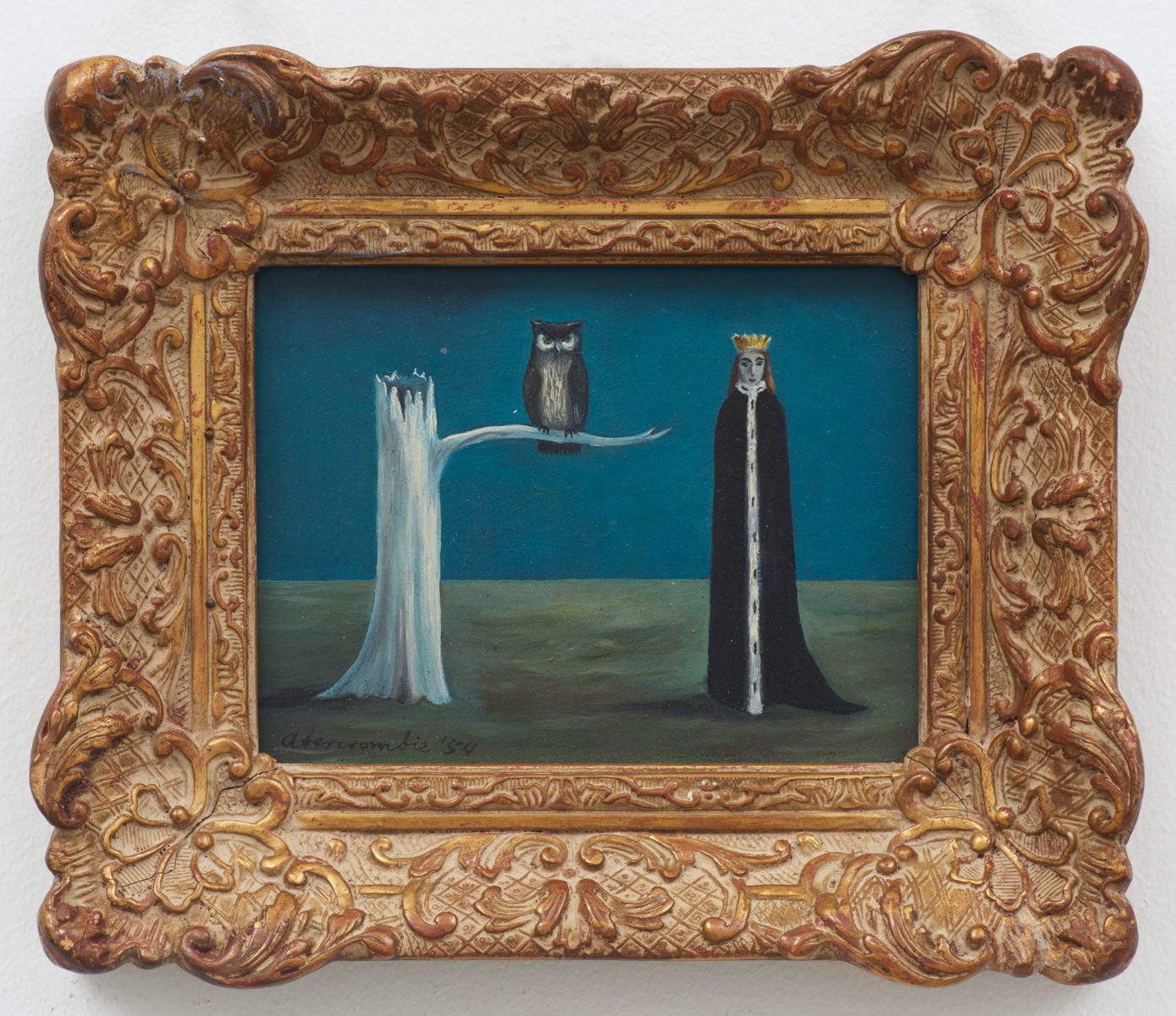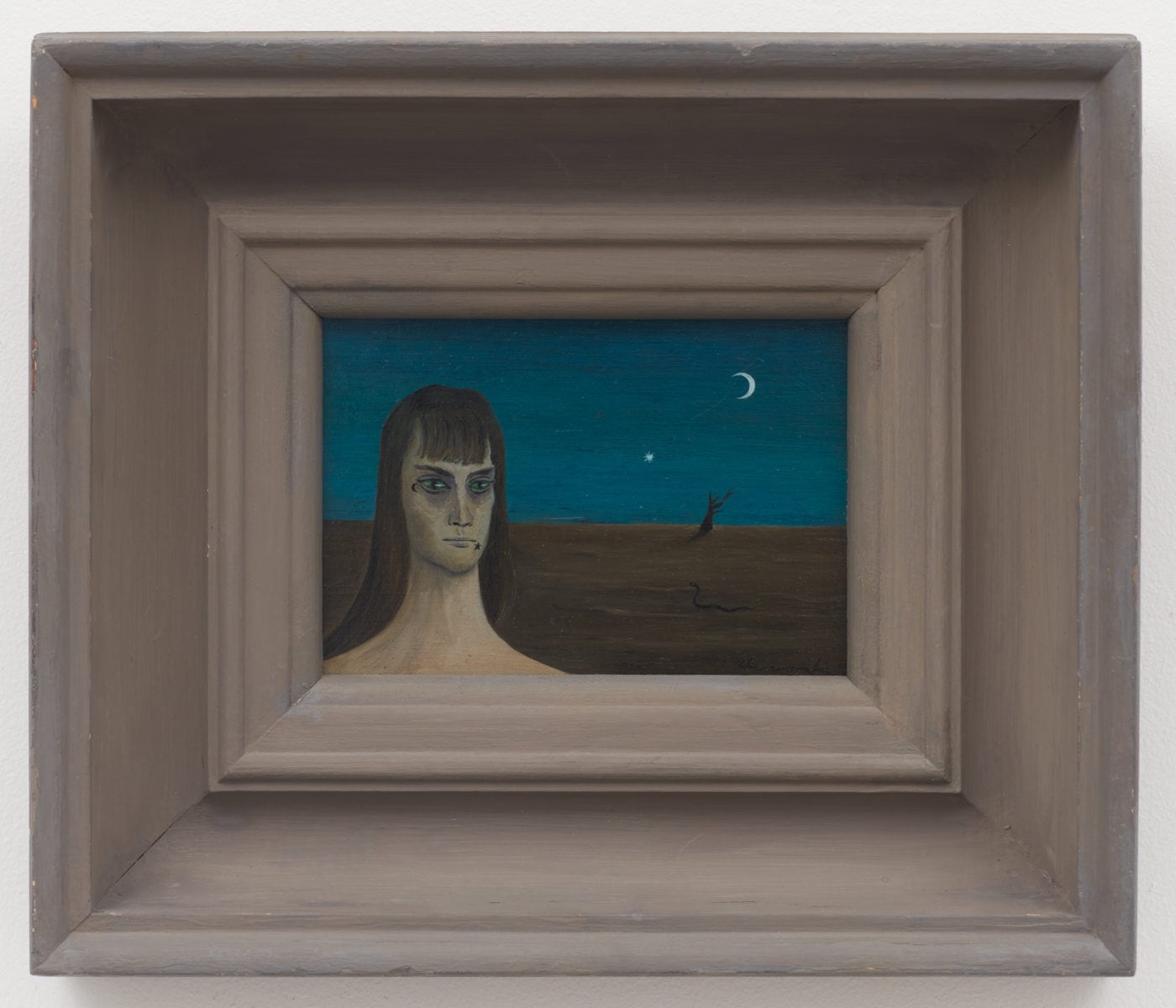


Artist: Gertrude Abercrombie
Curator: Karma Gallery with Dan Nadel
There was a particular passage in Roald Dahl’s The Witches that haunted me as a child. A young girl was placed under a spell by a malevolent witch and became trapped in an oil painting hanging in her home. Each day she’d appear in a different position, growing older day by day until she finally disappeared altogether. The late American surrealist Gertrude Abercrombie peers out from her own paintings too; from the confines of houses, behind walls or distantly traversing the Midwestern American landscapes she adored. She was also a bit witchy, on occasion donning a black witch’s hat and filling her paintings with symbols of the occult – brooms, moons, owls and black cats all regularly appear.
Born in Texas in 1909 to opera singer parents, Abercrombie grew up in Germany before settling in Chicago where she spent the rest of her life. A bohemian, jazz devotee (one of her closest friends was Dizzie Gillespie) and accomplished musician in her own right, Abercrombie was the self-appointed ‘Queen of Chicago’ and her Hyde Park salon became a gathering place and haven for creative people of varying racial and sexual identities at a time when tolerance was rare. Writer Robert Cozzolino observed that Abercrombie lived ‘the life she wanted, free of society’s prejudices, surrounding herself with people on McCarthy-era America’s margins.’ Given her significance as a key figure amongst the literary, musical and artistic circles in Chicago it’s surprising that Abercrombie’s work isn’t better known. In fact, her recent exhibition at Karma Gallery, organised in collaboration with independent writer and curator Dan Nadel, was Abercrombie’s first in New York since 1952.
Featuring almost seventy works arranged chronologically from 1934 (two years after she first began to paint) until 1971 (six years before her death) the show was packed, but pleasantly so. Her paintings are modestly scaled and muddy – painted on masonite and panel, not canvas. There is a deep pleasure in the close looking that Abercrombie’s works command.
One of their most noticeable attributes are the sometimes elaborate frames, often sourced second hand. These frames can be comically oversized, as in Compote and Grapes (1941) in which the repeating square indentations carved into the wooden frame cause the eye to rush, Hitchcock-style, towards the tiny, stamp-sized still life in the centre. Within the scene, a tabletop bearing a goblet and a bunch of grapes is flanked by a small painting of another landscape containing a ghostly bough and Abercrombie’s ubiquitous moon. The artist often created scenes within scenes, building up the symbols and interpretive layers of her paintings to imply that further mysterious activity occurs within and beyond them. This is seen to great effect in Untitled (Blue Screen, Black Cat, Print of Same) (1945) in which a black cat emerges from behind a blue screen in a scene faithfully repeated in a painting hanging on the wall behind them.
Abercrombie’s world is playful, and its recurring characters and scenes become strangely reassuring. There are meandering paths, skeleton trees, thickets of forest, towers, bridges and red expanses of brick. Landscapes are peppered with doors, ladders, dominoes, eggs, jacks, leaves and shells and occupied by a variety of characters both human and animal. We are often invited to enter into these scenes through the guise of a singular female protagonist who is at once Abercrombie and everywoman. Witness the slight, regal figure bedecked with crown, cloak and a confident gaze in Queen and Owl in Tree (1954); the mystic woman with reptilian green eyes and celestial embellishments of star and moon in Star and Crescent (1948) or the heavenly St. Brigit (1963). Be they queens, witches or saints, these women are clear symbols of female power.
Abercrombie’s personal life was tempestuous – she had an estranged daughter and suffered from alcoholism, from which she most likely died. Despite her complex struggles, her painterly alter egos remain strong and resolute. Unlike the claustrophobia inducing entrapped child in Dahl’s The Witches, Abercrombie’s presence within her own paintings points to something different. By appearing as the central protagonist in a deeply personal world of her own creation, Abercrombie’s recurring presence secures her immortality.
Serena Bentley is a curator and art writer from Aotearoa based in Narrm.
